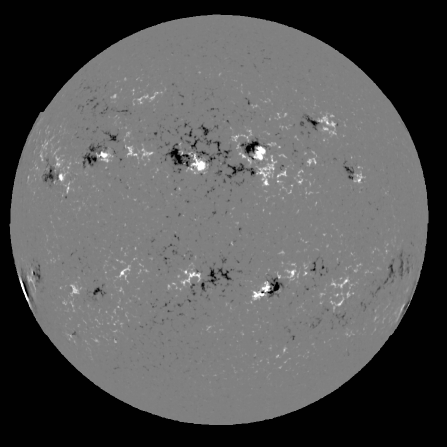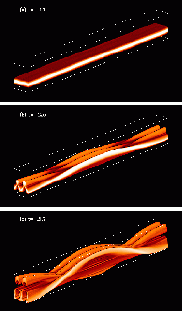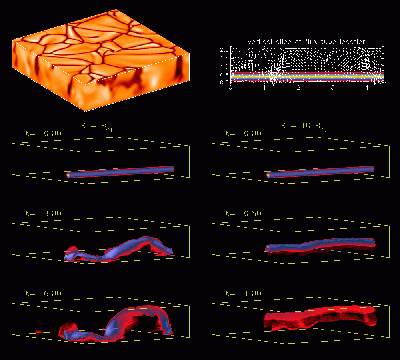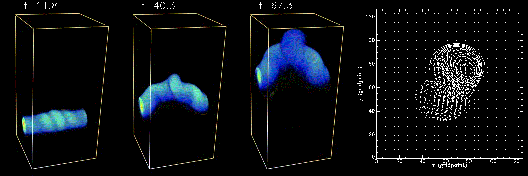
If the magnetic field seen in sunspots and active regions on the solar surface originates from a strong toroidal magnetic field generated by the dynamo mechanism at the base of the solar convection zone, then the question of how magnetic flux is transported through the convection zone and emerge into the solar atmosphere must be addressed. It is generally thought that magnetic flux rises buoyantly through the convection zone in the form of discrete flux tubes, and that the tubes should maintain reasonable cohesion in order that the emerging flux be organized as active regions, which display a well-defined order as described by Hale's polarity rule and Joy's law of active region tilts. For many years, my research has focused on the physics of buoyant magnetic flux tubes and their transport through the bulk of the solar convection zone. The following is a list of some of my reserach results. For a reaview on this subject please see my article in Living Reviews in Soalr Physics.

 movie1
movie1

